Description
What is Semaglutide at PeptideLabCo: Comprehensive Guide to Uses, Mechanism, and Research Applications

Semaglutide is a potent glucagon-like peptide-1 (GLP-1) receptor agonist transforming the management of type 2 diabetes and chronic weight control. In this guide, you’ll discover how semaglutide works at the molecular level, explore its approved medical uses, understand safety considerations, and learn about research-grade applications supported by PeptideLabCo. We’ll cover
- Mechanism of action and structural modifications
- Therapeutic benefits across metabolic and cardiovascular indications
- Side effect profiles and safety warnings
- Administration routes, dosing guidelines, and missed-dose protocols
- PeptideLabCo’s role in supplying high-quality semaglutide for in vitro and in vivo studies
- Key distinctions among Ozempic, Wegovy, and Rybelsus
- Common researcher and clinician questions answered
This roadmap unifies all subsequent sections under the central theme of “what is semaglutide” to provide a coherent, deeply referenced resource.
What is Semaglutide and How Does It Work?

Semaglutide is a synthetic GLP-1 analog that binds the GLP-1 receptor to boost insulin release, inhibit glucagon, slow gastric emptying, and reduce appetite within a single long-acting peptide framework. Understanding these combined actions sets the stage for exploring its therapeutic applications and molecular innovations.
What is Semaglutide as a GLP-1 Receptor Agonist?
Semaglutide mimics endogenous GLP-1 by engaging GLP-1 receptors on pancreatic β-cells and central appetite centers, enhancing glucose-dependent insulin secretion. By replicating this incretin hormone, semaglutide improves glycemic control in hyperglycemia and fosters satiety. This incretin-mimetic action underpins all downstream metabolic benefits.
How Does Semaglutide Enhance Insulin Secretion and Suppress Glucagon?
Semaglutide’s high affinity for pancreatic GLP-1 receptors triggers adenylate cyclase, raising cAMP and promoting insulin exocytosis in response to elevated glucose. Simultaneously, α-cell GLP-1 receptor activation suppresses glucagon release, reducing hepatic glucose production. These dual effects restore glycemic homeostasis even in insulin-resistant states.
Semaglutide’s Mechanism of Action
Semaglutide, a GLP-1 receptor agonist, enhances insulin secretion and suppresses glucagon release, leading to improved glycemic control. This mechanism is crucial for understanding its therapeutic benefits in managing type 2 diabetes.
Nauck, M. A., et al., Diabetes Care (2009)
This research provides foundational knowledge on how GLP-1 receptor agonists like semaglutide work to regulate blood sugar levels.
How Does Semaglutide Affect Gastric Emptying and Appetite Regulation?
By delaying gastric emptying through vagal nerve modulation, semaglutide prolongs nutrient presence in the stomach, blunting postprandial glucose spikes. Central GLP-1 receptor engagement in the hypothalamus suppresses orexigenic neuropeptides, reducing caloric intake. Together, slowed transit and appetite regulation drive sustained weight loss.
What Molecular Modifications Make Semaglutide Long-Acting?
Semaglutide’s peptide sequence includes an aminoisobutyric acid substitution at position 8 and a C-18 fatty diacid side chain via a γ-glutamic acid linker at lysine 26. These modifications promote reversible albumin binding, extend half-life to ~165 hours, and enable once-weekly dosing.
| Modification | Attribute | Impact |
|---|---|---|
| Aib substitution | DPP-4 resistance | Prevents rapid degradation |
| C-18 fatty diacid | Albumin binding affinity | Prolongs plasma half-life |
| γ-Glu linker | Spatial orientation | Optimizes receptor binding kinetics |
These structural innovations ensure consistent receptor activation and predictable pharmacokinetics for clinical and research use.
What Are the Medical Uses and Benefits of Semaglutide?
Semaglutide treats multiple metabolic and cardiorenal conditions by leveraging its GLP-1 receptor agonism to improve glycemic control, promote weight loss, and reduce organ-specific risks. Its versatility makes it a cornerstone therapy across diverse patient populations.
How Does Semaglutide Treat Type 2 Diabetes Mellitus?
Semaglutide improves HbA1c by approximately 1.5 percentage points versus placebo through enhanced insulin secretion and glucagon suppression. It addresses postprandial and fasting hyperglycemia while lowering the risk of hypoglycemia. Clinical trials such as SUSTAIN 6 demonstrate durable glycemic improvements in adults with T2DM.
What Role Does Semaglutide Play in Obesity and Weight Management?
Semaglutide induces 10–15 percent body-weight reduction by amplifying satiety signals and slowing gastric motility. STEP trials confirm sustained weight loss in individuals with BMI ≥30 kg/m². Reduction in adiposity improves metabolic markers and quality of life.
Semaglutide’s Impact on Weight Management
Semaglutide promotes weight loss by amplifying satiety signals and slowing gastric motility. Clinical trials have demonstrated significant weight reduction in individuals with obesity, highlighting its role in weight management.
Wilding, J. P. H., et al., The New England Journal of Medicine (2021)
This study supports the article’s claims regarding semaglutide’s effectiveness in promoting weight loss and its potential for treating obesity.
How Does Semaglutide Reduce Cardiovascular and Kidney Disease Risks?
By improving endothelial function, lowering blood pressure, and inducing weight loss, semaglutide decreases cardiovascular event risk by 26 percent in high-risk T2DM patients (SUSTAIN 6 trial). SELECT trial data further show cardiovascular benefits, and FLOW data indicate slowed progression of diabetic nephropathy, reducing albuminuria and preserving eGFR.
Cardiovascular Benefits of Semaglutide
Semaglutide reduces cardiovascular event risk in high-risk T2DM patients. This is achieved through improved endothelial function and weight loss, which are key factors in reducing cardiovascular risks.
Marso, S. P., et al., The New England Journal of Medicine (2016)
This research supports the article’s claims regarding semaglutide’s cardiovascular benefits, specifically its ability to reduce cardiovascular events in high-risk patients.
| Indication | Mechanism | Benefit |
|---|---|---|
| Type 2 Diabetes Mellitus | Insulin ↑, Glucagon ↓ | HbA1c reduction |
| Obesity and Weight Management | Appetite ↓, Gastric emptying ↓ | Sustained weight loss |
| Cardiovascular Risk Reduction | Endothelial function ↑ | Fewer MACE events |
| Chronic Kidney Disease | Renoprotection | Slowed eGFR decline |
| Metabolic Dysfunction-Associated Steatohepatitis | Anti-inflammatory modulation | Reduced liver fibrosis |
This spectrum of benefits positions semaglutide as a multipurpose metabolic therapy.
What Are the Common and Serious Side Effects of Semaglutide?

Semaglutide’s safety profile balances frequent gastrointestinal reactions with rare yet serious events requiring monitoring. Awareness of contraindications ensures patient safety.
What Are the Most Common Gastrointestinal Side Effects?
Nausea, vomiting, diarrhea, and constipation occur in 20–30 percent of patients, typically transient and dose-dependent. Initiating therapy at lower doses with gradual escalation mitigates these effects while maintaining tolerability.
What Serious Adverse Events Should Be Monitored?
Pancreatitis, gallbladder disease, and thyroid C-cell tumors (including medullary thyroid carcinoma) have been reported. Monitor serum amylase/lipase, gallbladder ultrasound, and serum calcitonin in at-risk populations. Early detection prevents progression to severe complications.
What Are the Contraindications and Safety Warnings for Semaglutide?
Semaglutide is contraindicated in patients with personal or family history of medullary thyroid carcinoma and those with multiple endocrine neoplasia syndrome type 2. Use caution in renal impairment and avoid coadministration with other GLP-1 receptor agonists.
How Is Semaglutide Administered and What Are the Dosage Guidelines?
Semaglutide’s flexible administration routes—injectable and oral—accommodate diverse clinical needs, with clear titration schedules optimizing efficacy and safety.
What Are the Differences Between Oral and Injectable Semaglutide?
Oral semaglutide (Rybelsus) uses an SNAC absorption enhancer, achieving approximately 1 percent bioavailability; it is taken once daily in fasting conditions. Injectable formulations (Ozempic, Wegovy) bypass GI degradation, allow once-weekly dosing, and achieve predictable plasma levels.
How Should Semaglutide Injections Be Properly Administered?
Administer subcutaneously in the abdomen, thigh, or upper arm. Rotate injection sites weekly, inject on the same day each week, and avoid intramuscular or intravenous routes. Proper technique ensures consistent absorption.
What Are the Recommended Dosages for Diabetes and Weight Loss?
Diabetes (Ozempic/Rybelsus): Start at 0.25 mg weekly (injectable) or 3 mg daily (oral), titrate to 1 mg weekly or 14 mg daily. Weight loss (Wegovy): Start at 0.25 mg weekly, escalate over 16–20 weeks to 2.4 mg weekly for maintenance.
What Should You Do If a Dose Is Missed?
For weekly injections, administer as soon as remembered if >5 days remain until next dose; otherwise skip and resume regular schedule. For daily oral doses, take within 7 hours of missed dose or skip if beyond 7 hours.
How Does PeptideLabCo Support Research-Grade Semaglutide Applications?
PeptideLabCo provides high-purity semaglutide for laboratory investigations, backed by rigorous quality control and ethical compliance to accelerate scientific discovery.
What Is the Difference Between Pharmaceutical-Grade and Research-Grade Semaglutide?
Pharmaceutical-grade semaglutide meets GMP standards for human use; research-grade material is produced under controlled conditions with ≥95 percent purity, suitable for in vitro assays and animal studies. Certificates of analysis validate identity, purity, and endotoxin levels.
How Is Semaglutide Used in In Vitro and In Vivo Research Models?
In vitro, semaglutide probes GLP-1 receptor signaling in cell lines, measures cAMP responses, and assesses downstream gene expression. In vivo rodent models use subcutaneous injections or osmotic pumps to study metabolic outcomes, dosing effects, and tissue distribution.
What Ethical Considerations Are Important for Research Peptides?
Researchers must comply with institutional animal care guidelines, obtain IACUC approval for in vivo studies, and ensure fair data reporting. PeptideLabCo’s traceable supply chain supports reproducibility and integrity in preclinical research.
What Are the Key Differences Between Semaglutide Brands: Ozempic, Wegovy, and Rybelsus?
| Brand | Indication | Route | Typical Maintenance Dose | Distinctive Feature |
|---|---|---|---|---|
| Ozempic | Type 2 Diabetes | Subcutaneous | 1 mg weekly | CV risk reduction label |
| Wegovy | Chronic Weight Management | Subcutaneous | 2.4 mg weekly | Highest weight-loss dosing |
| Rybelsus | Type 2 Diabetes | Oral tablet | 14 mg daily | First oral GLP-1 receptor agonist |
How Do Ozempic and Wegovy Differ in Indications and Usage?
Ozempic is FDA-approved for T2DM and cardiovascular risk reduction at 0.5–1 mg weekly, whereas Wegovy at up to 2.4 mg weekly targets chronic weight management irrespective of diabetic status. Dose escalation for both follows separate titration schedules over 4–16 weeks.
What Are the Unique Features of Oral Semaglutide (Rybelsus)?
Rybelsus uses sodium N-(8-[2-hydroxybenzoyl]amino) caprylate (SNAC) to enhance gastric absorption, requires fasting administration, and demonstrates glycemic efficacy comparable to injectable forms at higher relative doses.
How Do Dosage and Side Effects Vary Across Brands?
Higher doses of Wegovy yield greater weight loss but increase GI side effect risk compared to Ozempic. Oral Rybelsus often causes transient dyspepsia. Individual dose titration balances efficacy with tolerability across formulations.
What Are the Frequently Asked Questions About Semaglutide at PeptideLabCo?
Below are direct answers to common queries from researchers and clinicians exploring semaglutide’s clinical and investigational use.
What Is Semaglutide Used For?
Semaglutide treats type 2 diabetes, manages chronic obesity, and reduces cardiovascular and renal event risks through GLP-1 receptor agonism that enhances insulin secretion, suppresses glucagon, delays gastric emptying, and promotes satiety.
How Does Semaglutide Work in the Body?
By binding GLP-1 receptors on pancreatic islets and central nervous system pathways, semaglutide triggers cAMP-mediated insulin release, inhibits glucagon, slows gastric transit, and modulates appetite centers to improve metabolic outcomes.
What Side Effects Should I Expect With Semaglutide?
Expect dose-dependent nausea, vomiting, diarrhea, and constipation initially, with rare reports of pancreatitis, gallbladder disease, and potential C-cell tumors. Gradual dose escalation mitigates most gastrointestinal effects.
Is Semaglutide the Same as Ozempic?
Yes, Ozempic is the branded injectable formulation of semaglutide for type 2 diabetes and cardiovascular risk reduction; the active peptide is identical, but formulations and dosing regimens differ.
How Can Researchers Obtain Semaglutide From PeptideLabCo?
Researchers can request semaglutide via PeptideLabCo’s online catalog or inquiry form. All research-grade peptides include certificates of analysis, MS data, and endotoxin testing to ensure experimental reliability.
Semaglutide’s multifaceted mechanism and broad therapeutic applications make it a leading agent in metabolic medicine. PeptideLabCo’s commitment to high-quality research peptides and transparent data supports innovative studies that expand semaglutide’s scientific horizon. By integrating advanced structural insights, clinical guidelines, and research protocols, this guide equips clinicians and investigators with the knowledge to harness semaglutide’s full potential.

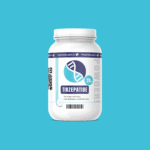
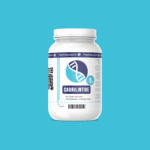
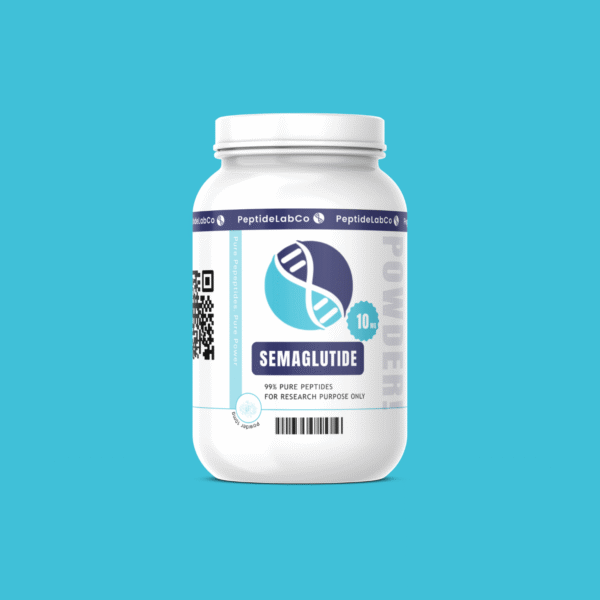
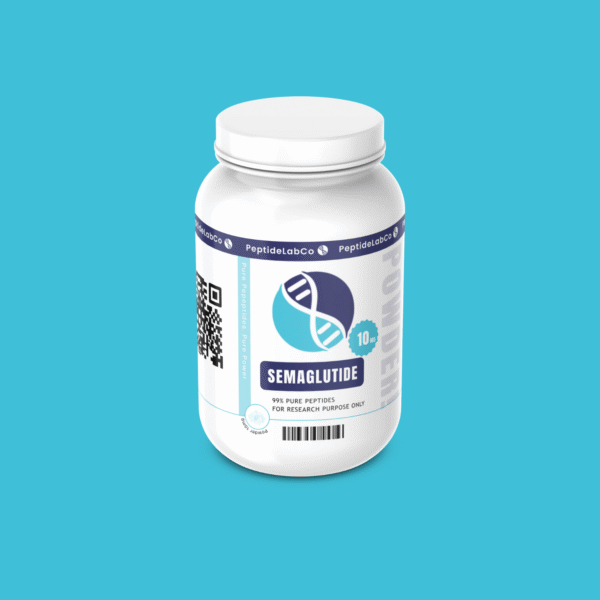
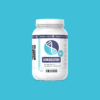


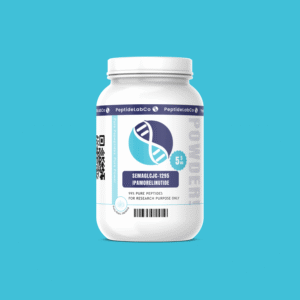
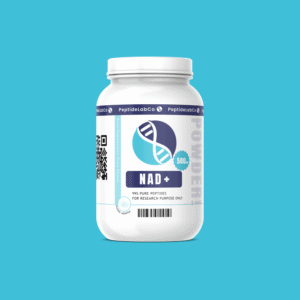
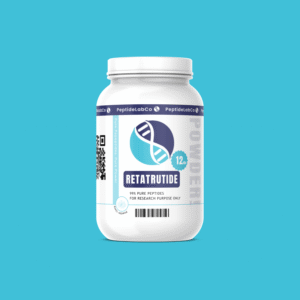
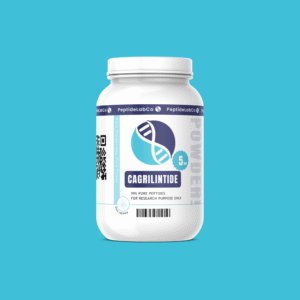
Reviews
There are no reviews yet.